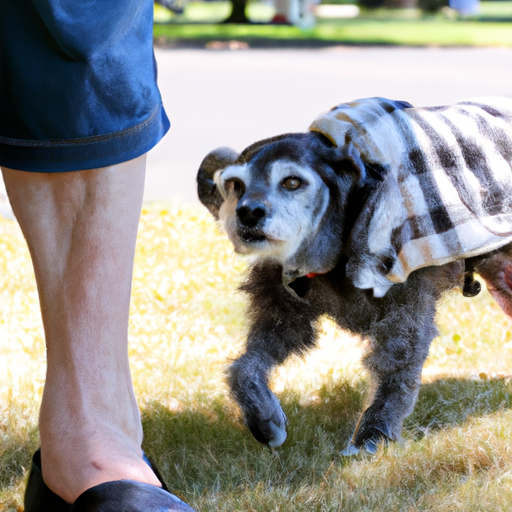Understanding Canine Arthritis
Canine arthritis, much like human arthritis, is a condition that affects your furry friends as they age. Your role as a caregiver is crucial. Much like the pain and discomfort you feel when your joints ache, your dog feels the same. They, however, have no way of expressing their discomfort verbally. Their reliance on you is absolute. It’s you who can make a significant difference in their lives.
Recognizing the Symptoms
Recognizing the symptoms of arthritis in your dog is the first step towards helping them. Here are some signs you should be on the lookout for:
- Difficulty moving or stiffness, especially after waking up
- Limping or favoring one leg
- Reduced activity or less interest in play
- Visible joint swelling or discomfort when a joint is touched
Treatment Options
Treating canine arthritis involves a combination of lifestyle changes and medication. Here’s what you can do to help your furry friend:
- Medication: Consult your vet about prescription drugs and dietary supplements that can help alleviate arthritis symptoms.
- Weight Management: Keeping your dog at a healthy weight can significantly reduce the stress on their joints.
- Physical Therapy: Regular, gentle exercise is beneficial for keeping your dog’s joints flexible.
| Treatment Option | Description |
|---|---|
| Medication | Prescription drugs or dietary supplements |
| Weight Management | Keeping your dog at a healthy weight |
| Physical Therapy | Gentle, regular exercise |
Making Your Dog Comfortable
As a caregiver, there are several things you can do to make your dog more comfortable:
- Provide a warm and cozy bed to ease their joint pain.
- Use pet-friendly ramps and stairs to help your dog navigate around the house.
- Regularly groom your dog, particularly if they have difficulty grooming themselves due to arthritis.
Prevention is Better Than Cure
While arthritis isn’t entirely preventable, you can take steps to delay its onset and reduce its impact:
- Maintain your dog’s optimal weight.
- Ensure regular, moderate exercise.
- Provide a balanced diet rich in Omega-3 fatty acids.
Frequently Asked Questions
Q: Can my young dog get arthritis?
A: Yes, while it’s more common in older dogs, young dogs can also develop arthritis due to injuries or genetic predisposition.
Q: Can arthritis be cured?
A: No, arthritis is a degenerative condition. However, its symptoms can be managed effectively.
Q: How can I tell if my dog is in pain?
A: Look for signs like limping, difficulty moving, reduced activity, or visible discomfort when a joint is touched.



